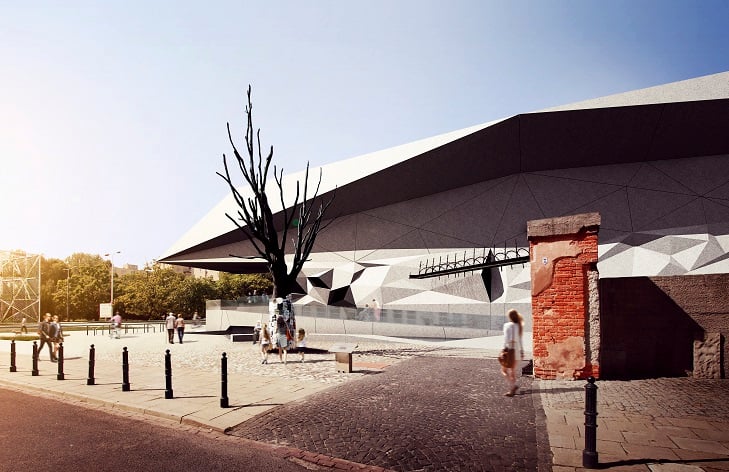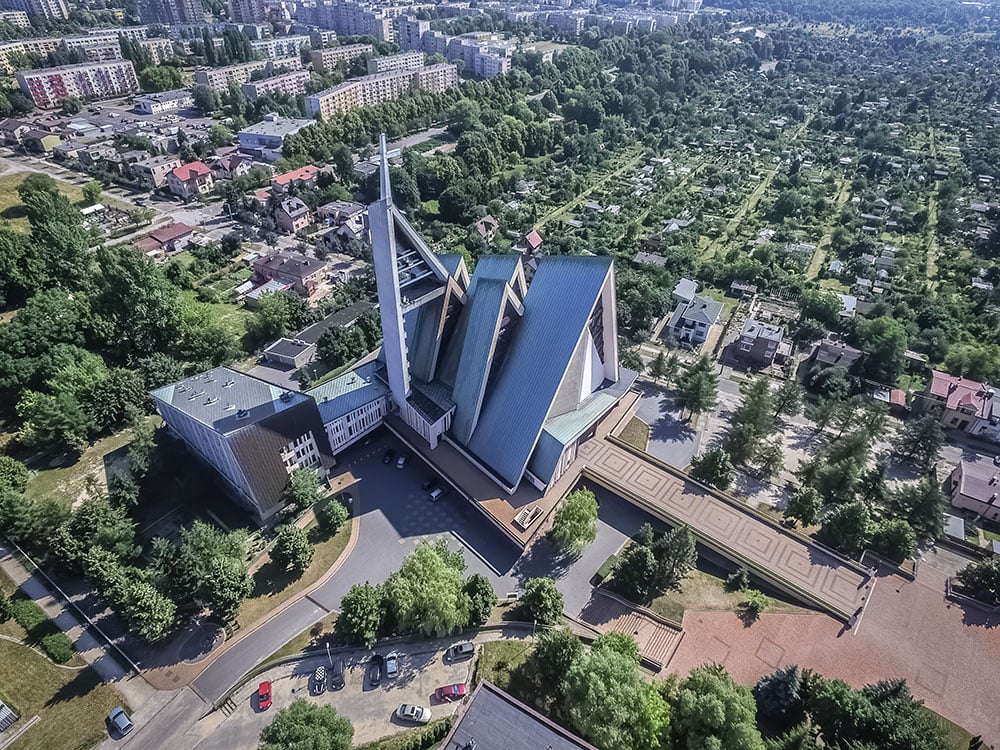This Polish research station is bringing sleek style to the Antarctic
Last month, veteran Polish architects Kuryłowicz&Associates revealed their plans for the Henry Arctowski Antarctic Station, an ambitious new combination of a research facility and accommodation for 29 scientists working on King George Island in the Antarctic’s South Shetland Archipelago. Financed by the Polish government, the Station is planned as an extension of pre-existing facilities run by the Institute of Biochemistry and Biology of the Polish Academy of Science, with a deadline set for 2023.
The sleek, tripartite structure and striking, golden metal cladding of K&A’s design combines close attention to the risks and demands of the extreme location with an eye for local traditions. The wood-lined interiors and large windows are designed to foster a sense of domesticity in a multi-functional space that will also house a gym, sauna, and greenhouse. We spoke to Bartosz Świniarski, an architect for K&A who worked on the Station, about how his team approached such a striking and demanding project.
How did you approach a commission of this unusual nature? How did it affect your design process?
We received this commission after sending our preliminary concept, or “offer”. After analysing the problem, though, we decided that without planning for the logistics of transportation to King George Island, and without a cost assessment of possible alternative designs, this concept might be very superficial. It was obvious that, in this case, pretty visualisations would not do. The design problem was really fascinating, so we put lots of work into approaching it, acquiring necessary information about the specificity of the site and the unique work of the scientists there. We also analysed other recently realised projects in this area of the world. So, compared with other preliminary concepts, this one is really full of potentialities which were quite well thought through.
Can you describe the specific challenges to an architect posed by this kind of extreme environment? How did you address them?
There were a number of challenges that we needed to take into consideration during the design process, and some had a big impact on the physical shape of the building. The fact that the building will be located over 14,000 km from the country of origin was one of the most important issues. The decision was made to design it so that it could be prefabricated and tentatively assembled in Poland, and then disassembled and shipped to Antarctica in shipping containers to be assembled on the spot. This resulted in a modular construction philosophy reminiscent of Ikea furniture, with drawing packages that contain dimensions and instructions and a particular set of tools needed for assembly.
After dealing with the transportation we had to face the extreme weather conditions. The strong katabatic winds, in particular, presented a serious challenge. Not only will the building have to stand against wind gusts reaching 75 metres per second, but it also needs to be constructed within a narrow time period when the weather conditions allow for acceptable construction conditions. The modular approach will allow for the assembly of this 1,300-square-metre building in less than three months. According to the 1959 Antarctic Treaty, the building cannot be permanently fixed to the ground, so strong winds could literally cause it to fly away. The idea was to construct the cross section of the building along the principle of an inverted wing, meaning the wind itself keeps the building firmly pressed into the ground. Finally, the building was raised three metres above ground level to prevent the formation of snow mounds.
How did you attempt to combine the practical needs of a scientific base in the Antarctic with attractive design elements?
An important aspect of the overall design was the choice of material for the outer skin of the building. The strong local winds carrying small rocks and salty water will cause accelerated wear to any material, so we were looking for a product that would be resistant to scratches and rusting. Moreover, it was supposed to relate to the historically yellow colour coating of the existing Polish Antarctic base buildings. The choice was an alloy of copper and aluminium, which gives the building a distinctive, surprising golden colour. The material will lose a bit of its initial shininess due to weathering but it will not lose its tone, rust, or need maintenance.
Our aim wasn’t to design a “futurist” building. Decisions regarding the choice of materials or the form were always made on the basis of thorough research. For instance, the tripartite spatial layout was based on the three prevailing wind directions on the island. Individual functions within the building were assigned their locations depending on whether there was a view overlooking the bay and how much sunlight was available. The extensive use of wood in the interiors is supposed to have a positive psychological effect on its inhabitants during the long winter nights.


